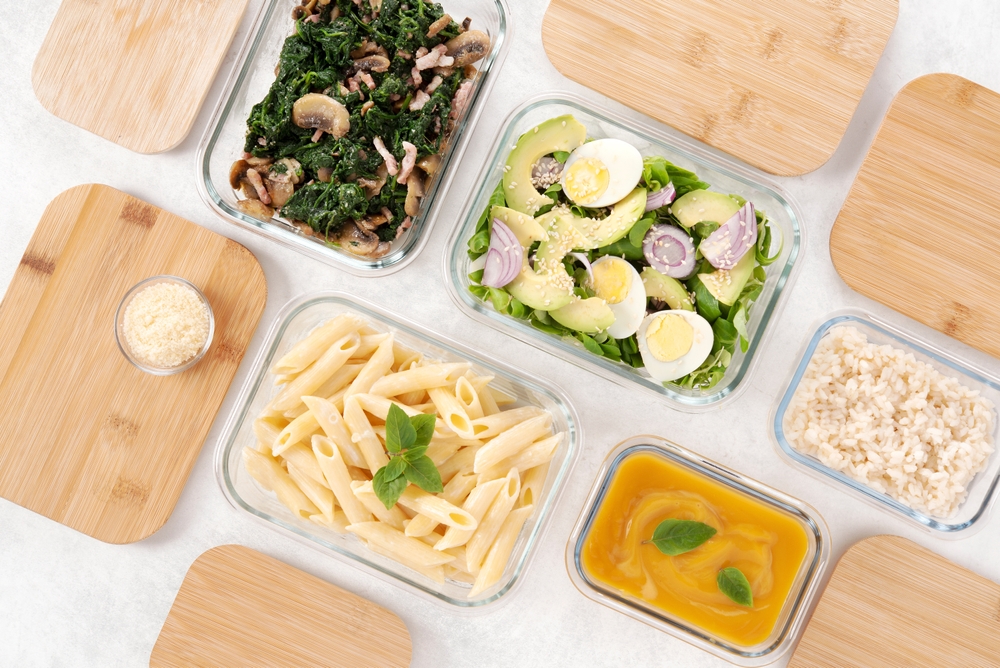A Guide for Healthy Eating with Neurodivergent Individuals — for family and caregivers
Things to consider when meal planning for a family member or client who is neurodivergent.
Neurodivergence is used to describe a variation in brain functioning. Conditions including autism, ADHD, and other neurological or developmental conditions are included within this umbrella term. Neurodivergence acknowledges that cognitive differences may affect how neurodivergent individuals interact with and view the world. The Neurodiverse Affirming Model says we should embrace these differences instead of trying to change them. As a family member or caregiver for someone who is neurodivergent, you may have noticed uncommon behaviors during mealtime. This could manifest as unique food preferences, altered appetite, forgetting to eat, or difficulty concentrating during meals. It is important to support neurodivergent individuals through these behaviors so they receive proper nutrition.
Here are 4 tips you can use to support someone who is neurodivergent:
Tip 1: Identify their preferences.
One misconception is that neurodivergent individuals behave the same. This couldn’t be farther from the truth. As human beings, we all have individual preferences. This remains true for neurodivergent individuals. The best way to support someone who is neurodivergent is to identify their preferences and meet them there. They may prefer their food to reflect a certain texture, temperature, or taste. Texture preferences could be soft, pureed, crunchy, hard, liquid, thickened, crumbly, crispy, gritty, or creamy. Temperatures preferred could be hot, cold, or warm. Taste preferences may include bland foods, salty, savory, sweet, sour, or bitter. Preferences can be identified by observing foods that are consumed at mealtime. Do they finish their plate when they eat hot, bland, crispy foods? Do they take small bites of cold, sweet foods? Mealtime observations will help identify preferences so you can modify their food to meet their needs best.
Tip 2: Modify food options.
Once you identify food preferences, it is important to understand how to modify food. The texture, temperature, and taste of foods can be changed to meet the needs or preferences. Texture can be modified using equipment like a blender, oven, fryer, food processor, or stovetop. If a creamy texture is preferred, add the food to the blender with milk or yogurt. Blenders and food processors can also be used to soften and puree food. Crispy foods without oil can be created in an air fryer. If this isn’t accessible, use an oven to make food crispy or crunchy. The temperature of food can be altered by heating cold foods or cooling down hot foods. Hot food can be placed in an ice-water bath, or ice cubes can be added to soups or broths to lower temperatures quickly. The taste of food can be diminished or enhanced. If bland food is preferred, be sure to limit seasoning, sauces, citrus, and acids in food. If flavor is preferred, increase those items.
Tip 3: Examine the mealtime environment.
Some neurological or developmental conditions, like autism, are characterized by sensory sensitivities. Sensory sensitivities describe increased reactions to taste, feelings, sights, sounds, and smells. Examine the place where your family member or client has their meals. Identify sensory inputs that may affect their ability to focus on their plate. The easiest way to do this is by observing what grabs their attention during a meal. Is it the food or another stimulus? If it is another stimulus, try removing the stimulus if it is causing irritation or discomfort. An example of this is eating a meal in a dimly lit room instead of a room with bright fluorescent lighting. This could also look like turning off the washer or dryer to decrease background noise. If your loved one or client can communicate with you, ask what would make their mealtime experience better for them.
Tip 4: Offer, never force, new foods
You will hear about a new food or drink with a health benefit everywhere you go. You may even feel inclined to have your neurodivergent client or family member try these foods. My professional advice is to focus on a balanced diet. At mealtime, offer fruit, vegetable, whole grain, protein, and dairy products. Choose ingredients within these groups that they already know and love. If they currently don’t enjoy foods from one of these groups, have an option from each food group available to them -it may be within their reach. It may be days, weeks, or months before they become open to something new; however, having them participate in the process may be helpful. Don’t force new foods. Allow them to experience it and choose it for themselves.
Neurodivergence acknowledges our brain differences, and the Neurodiverse Affirming Model celebrates those differences. When working with neurodivergent individuals, meet them where they are and cater the meals you plan to their preferences. This may include modifying foods’ taste, texture, and temperature, changing the environment during mealtime, or offering (never forcing) foods from all food groups. As a family member or caregiver to someone who is neurodivergent, you can be a source of support by letting them know it is okay to eat different things. Please be sure to encourage, encourage, and adapt when needed. This will help your loved one receive adequate nutrition for a healthy brain and body.
Thank you to Ariel Buckley, MPH, for her research and contributions to this article.
Ariel was a Dietetic Intern rotating through Maya Feller Nutrition.



Leave a Reply